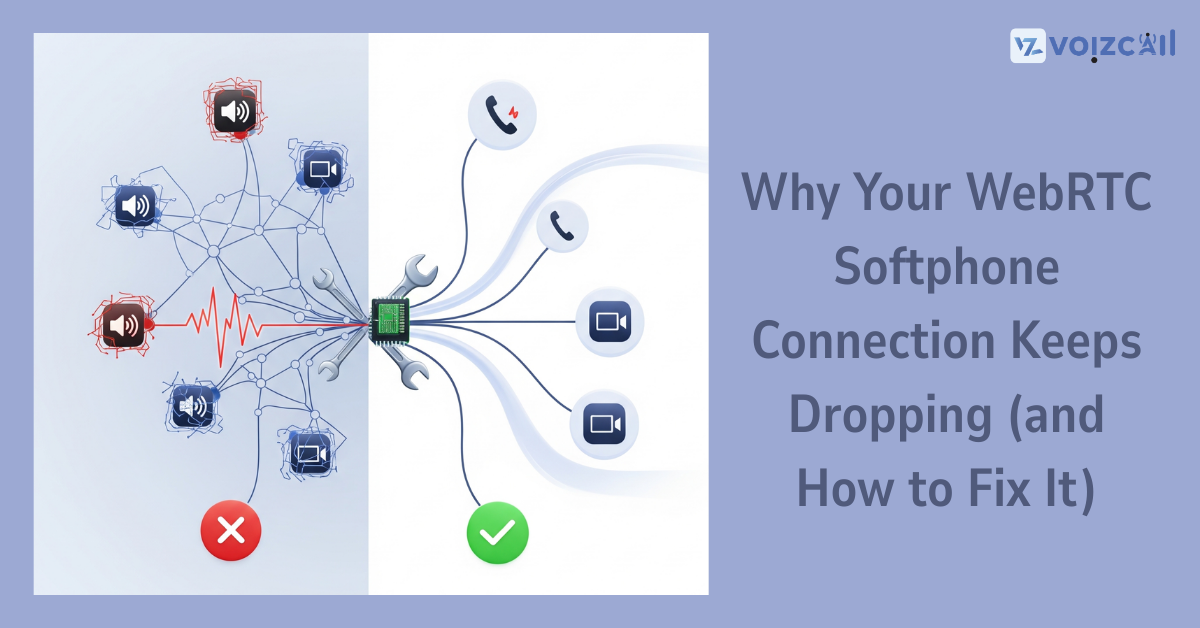


13/Aug/2025
We have all experienced this moment a few times; you are in the middle of an important VoIP call and all of a sudden, the speaker goes quiet or the connection goes dead. It is annoying, unprofessional and might mean you lose customers.
When your calls just keep dropping with a WebRTC softphone, it typically is not the fault of the software but a combination of network, device and configuration problems.
The upside? The issues can be easily resolved when you understand what causes them. So how about we analyze it?
WebRTC softphones require steady, quality internet connection in order to support a smooth call. Call drops may occur because of even small variations.
Common causes:
Weak Wi-Fi signal
Excessive devices on a network
Call / Email for Sales Inquiry Today
Slower than 2 Mbps upload/download speed on the net
What one may do about it:
Wired Ethernet connection should be used to make critical calls
Restrict background download or streaming
Before episodes of an important meeting, take time to test your internet speed
In case WebRTC traffic is blocked by your firewall or router, your calls can break suddenly.
The reason it occurs:
WebRTC supports certain ports and protocols (such as UDP, STUN, and TURN servers) which are required to be available in order to communicate.
Fixing it:
To encourage your IT department to whitelist WebRTC ports
Enable STUN/TURN servers to traverse better NAT
A VPN is only useful in instances where your VoIP provider can accommodate it
3. Old Browser or APP: Softphone
Because WebRTC runs natively in browsers, compatibility with an older version may be a problem.
To fix it:
Always keep Chrome, Firefox, Safari or Edge up to date
Empty your browser cache every now and then
When employing a stand-alone WebRTC softphone application, be quick to upgrade
4. Issues of Device Performance There are issues with the performance of the devices.
When your quivering laptop or cellphone is overburdened, it is unable to process audio/video applications real time.
Signs:
Audio lag
Video freezing
Lag in voice transmission
How it can be fixed:
Prior to your call, close tabs and apps that you are not using
Have VoIP devices at least of 4gb RAM capacity to work effectively
Maintain drivers and operating systems Up to Date
5. Issues on the provider/server side
Often it is not your fault, sometimes it will be with your VoIP provider such as busy servers or upgrades where they have a service outage.
What to do about it:
The outages can be checked on the status page of your provider
Call support in case drops occur regularly around the same time of day
There is a good alternative to your current WebRTC softphone provider which offers servers at the worldwide level
Final Thoughts
The WebRTC softphone is one of the most useful applications to handle modern business communication, yet failure to sustain the connection can turn a bad experience.
By ensuring:
consistent level of connectivity with the internet
Good network settings
New apps and upgraded browsers
Adequate performance of the devices
Trustworthy VoIP telephone company assistance
you could even make crystal-clear calls with no stops.
Therefore, when your WebRTC softphone loses the connection next time you will know how and where to look it up immediately.